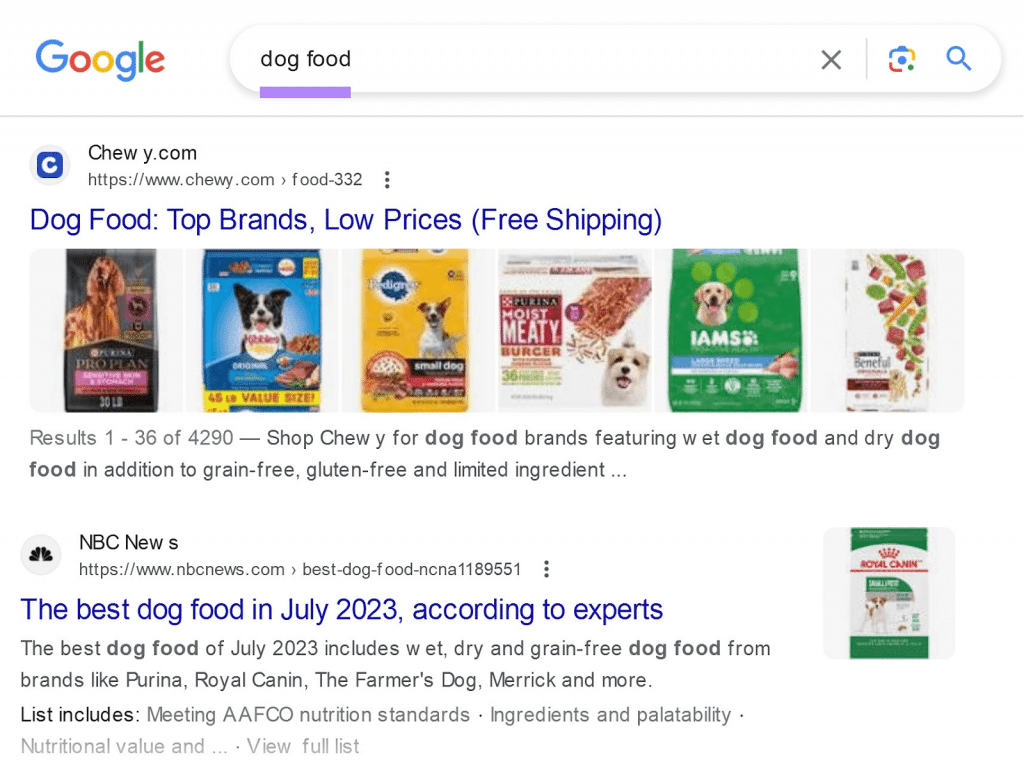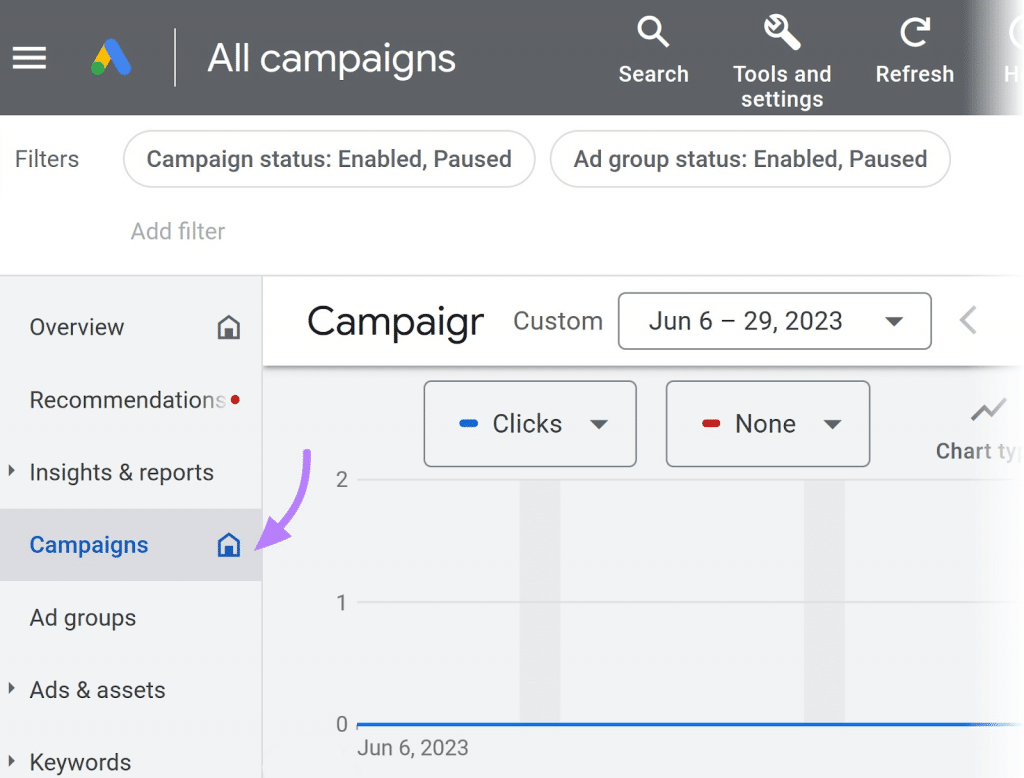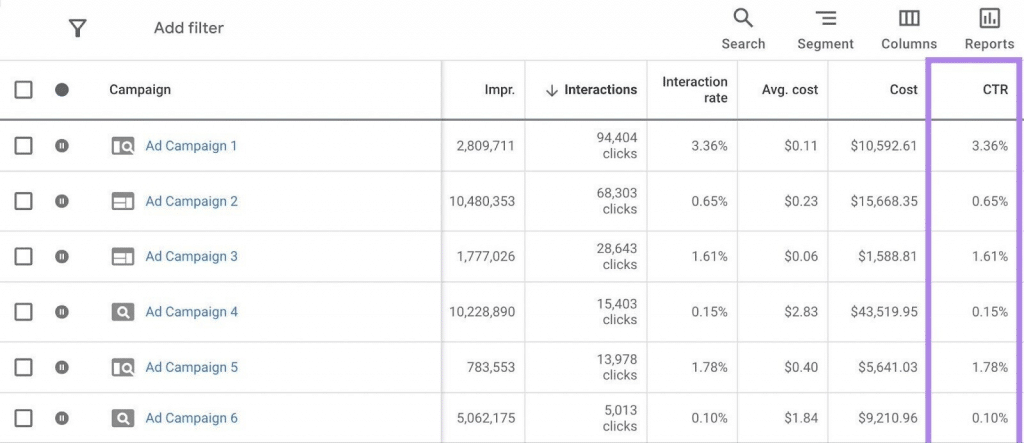When I initially started in digital marketing, I was overwhelmed by the number of metrics to track and optimize. Click Through Rate (CTR) was one of those metrics that appeared simple, but proved difficult to improve significantly. That was until I discovered an odd approach that increased my CTR by an incredible 473%. In this article, I’ll outline the specific procedures I followed to calculate and improve my click-through rate. Let’s get started and see how you may use this industry method to generate amazing outcomes.
What is Click Through Rate (CTR)?
Click-through Rate (CTR) is a crucial metric in digital marketing that measures the percentage of people who click on a link or ad after seeing it. You can calculate the click-through rate using this formula.
CTR= (Number of Clicks/Number of Impressions)×100
How To Callculate click through rate
For instance, if your ad receives 1000 impressions and 50 clicks, your CTR would be 5%.
CTR helps you understand the effectiveness of your ad copy, keywords, and overall campaign strategy.
For example, if you enter “dog food” into Google, you may see a search ad like the one below on the search engine results page (SERP).
An example of a sponsored post in Google’s SERP when searching for “dog food”
Assume this search ad appears in the SERP 10,000 times in one week. And 200 people clicked on the ad that week. This advertisement would have a CTR of 2%.
CTR is a common metric for PPC ad campaigns on search engines and social media.
However, it can also be used to determine the effectiveness of your search engine optimization (SEO) activities. Because a higher CTR increases organic traffic (unpaid traffic from search results) to your website.
Consider the organic results beneath the ad for the same “dog food” search. Unpaid search results like this will all have their own CTRs.

However, in this post, we will look at CTR in the context of search ads. That is what most people mean when they talk about CTR.
Why Is the Click-Through Rate Important?
Understanding CTR is crucial since a high CTR implies that your advertising is efficiently capturing the attention of your target audience.
A high CTR is also useful for:
- Driving cost efficiency: If you pay for ads on a cost-per-click (CPC) basis, a higher CTR indicates that you are getting more value for your advertising dollar.
- Evaluate your campaigns: CTR can be used to assess the efficacy of individual advertisements, keywords, or campaigns. So you can figure out what works and what doesn’t for future campaigns.
- Improving Your Ad Rank: Your actual CTR can influence your Google-predicted Expected CTR over time, affecting your Ad Rank (a figure that affects where your ad shows in comparison to other advertisements). The higher your Ad Rank, the better your ad will perform.
Sign in to your Google advertisements account to get the CTR for your search advertisements.
On the menu on the left, click “Campaigns.”

Scroll to the “CTR” column to discover the CTR for each ad campaign.
You should see something like this.

A study by HubSpot found that increasing your CTR from 1% to 2% can significantly lower your CPC by up to 50%.
When I first started managing PPC campaigns, my CTR hovered around a dismal 0.5%. I tried various optimizations—changing headlines, tweaking ad copy, and experimenting with keywords—but nothing seemed to work. Frustrated, I began researching less conventional methods and stumbled upon a unique approach that seemed almost too simple to be effective.
How To Calculate the Click-Through Rate (CTR)?
CTR is an abbreviation for “Click-Through Rate” and is a typical metric used to track the performance of digital advertising campaigns.
In a nutshell, the click-through rate (CTR) is the number of users who “clicked” on the ad divided by the number of users who “saw” it.
To put it another way, you can calculate the click-through rate CTR by dividing the total number of clicks on an ad by the total number of impressions over a specified period.
The click-through rate (CTR) has three distinct variations:
- Organic CTR: This refers to the click-through rate from organic search engine results pages, namely Google Search.
- Email CTR: This is the click-through rate from email activities such as newsletters and email marketing campaigns
- Pay-Per-Click (PPC) CTR: This is the click-through rate from PPC adverts.
Search engines place a premium on sites with a high click-through rate (CTR), hence the measure is especially important for pay-per-click (PPC) campaigns.
CTR Formula
The formula for calculating click-through rate (CTR) is shown below.
CTR (Click-Through Rate) = Total Clicks ÷ Total Impressions.
How To Calculate Click-through rate
Total clicks on ads: To determine the number of times an ad or link is shown, multiply the number of clicks received by the total number of impressions.
For example, if a website receives 50 clicks and 1,000 impressions, the CTR is 5.0%.
The click-through rate (CTR) is 5.0%, you calculate it by dividing 50 clicks by 1,000 impressions.
What is a Good Average CTR?
What constitutes a good CTR for one company may differ from another. Consider two ecommerce companies, Company A and Company B, who both execute online advertising efforts. Company A operates in a highly competitive industry, where a CTR of 2% is regarded as acceptable due to severe competition for clicks. Company B works in a niche market with less competition, making a CTR of 5% more realistic with smart targeting.
The idea is to use your own past CTR as a baseline to constantly monitor, measure, and improve the success of your ads. Business leaders and marketers frequently track their CTR monthly to identify swings and determine what causes rises or declines. CTR tracking enables them to make more informed advertising decisions and achieve greater outcomes.
While CTR benchmarks vary each company, it may be useful to know the typical rates across multiple channels:
| Channel | Average CTR |
| Social media networks | 1.2% |
| Google Ads | 3-5% |
| Email campaigns | Around 2.91% |
However, take these figures with a grain of salt. For example, if your CTR is continuously improving but remains somewhat below the industry average, we advocate focusing on ongoing progress rather than meeting industry averages.
How to Calculate and Improve Your Click-Through Rate
Step #1: Monitor your metrics
Accurately measuring your metrics is essential for calculating and improving your Click Through Rate (CTR). Here’s how to do it effectively:
1. Select the Appropriate Tools:
- Google Analytics: Effective for tracking CTR on your website. Set targets and track the effectiveness of your CTAs (Call to Action).
- Facebook Advertisements Manager: Ideal for tracking CTR on Facebook advertisements. Provides detailed information on impressions, clicks, and CTR.
- Google Ads: Required for tracking PPC campaign results. Provides metrics such as clicks, impressions, and CTR.
- Other Tools: Depending on your platform, tools like Twitter Analytics, LinkedIn Campaign Manager, and Instagram Insights may also be useful.
2. Set Up Tracking:
- Install Tracking Codes: Check that your website and adverts have the proper tracking codes installed. For Google Analytics, this entails including the GA monitoring code on your website.
- Setup UTM parameters: Track the effectiveness of certain campaigns and advertisements using UTM parameters. This allows you to identify which sources provide the most traffic and clicks.
- Create Conversion Goals: Define what makes a successful click. This could include a page visit, form submission, or product purchase.
3. Monitor Regularly:
- Everyday Checks: Monitor your metrics every day to detect any significant changes early.
- Weekly Report: Weekly reports should be generated to examine performance patterns and make educated decisions.
Step #2: Evaluate your current CTR
Once you’ve established your metrics, the following step is to assess your existing CTR to determine what’s working and what needs to be improved.
1. Calculate Your Click-through Rate CTR:
- Apply the following formula: [\text{CTR} = \left(\frac{\text{Number of Clicks}}{\text{Number of Impressions}} \right) \times 100 ]
- For example, if your ad received 1000 impressions and 50 clicks, your CTR would be 5%.
2. Recognize patterns and trends:
- High-performing ads: Identify the ads with the highest CTR. Examine the headlines, graphics, and CTAs to understand which aspects are generating clicks.
- Low-performing ads: Similarly, identify ads with a poor CTR. Analyze these advertisements to identify common variables that may be driving bad results.
- Keyword analysis: Examine the keywords that are producing the most clicks. High-performing keywords might help you plan future content and advertising strategies.
3. Segment your data:
- By Audience: Analyze your CTR by audience segment to determine which demographics are most engaged.
- By Device: Compare CTR across many devices (desktop, mobile, and tablet) to determine where you do best.
- Based on Time: Analyze CTR by the time of day or day of the week to determine peak performance windows.
Step #3: Set Emotional Triggers
Including emotional triggers in your ad language can greatly increase engagement. Here’s how to do it successfully:
1. Identify emotional triggers
- Pain points: Understand your audience’s common pain points. What difficulties are they attempting to solve?
- Desire: Identify your audience’s desires and goals. What do they want to achieve?
2. Create Emotionally Charged Headlines
- Use powerful phrases to elicit feelings like excitement, terror, curiosity, or urgency.
- Instead of “Learn Digital Marketing,” say “Transform Your Career with These Digital Marketing Secrets.”
3. Use Compelling graphics: Combine emotional ad language with complementary graphics to reinforce the message. Images and films that elicit emotion can dramatically increase engagement.
4. Emphasize emotional benefits for your target audience. Explain how your product or service will help them solve difficulties or meet their desires.
Step #4: A/B testing
A/B testing allows you to evaluate different versions of your adverts and determine which one performs better. This is how you do it:
1. Create Variations: – Create many variations of your ad with minor modifications to headlines, visuals, CTAs, and emotional triggers.
2. Set Up Your Test: – Conduct A/B testing using platforms such as Google Ads or Facebook Ads Manager. Divide your audience equally among the several ad versions to ensure a fair comparison.
3. Run the Test: – Run the test for enough time to collect relevant data. To guarantee that the results are statistically significant, do not finish the test prematurely.
4. Analyze Results: – Compare CTR for each ad variation. Determine which elements led to the improved performance.
- For example, if an ad with a fear-based headline performed better than one with a neutral headline, it means that your target demographic is more responsive to fear-based triggers.
Apply A/B testing insights to improve your marketing approach. Implement the winning aspects in future ads and keep testing to improve further.
Step 5: Monitor and adjust.
Continuous monitoring and adjustment are critical for maintaining and increasing your CTR. Here’s how to remain ahead of your game:
- Keep track of your ad performance frequently. Dashboards and automated reporting can help you remain on top of crucial metrics.
- Respond to Trends: – Recognize and address data trends. If you detect a rapid decline in CTR, evaluate the source and take appropriate measures.
- Continuously optimize your ad copy, images, and targeting depending on performance data. For example, if you discover that videos outperform static images, add more video material to your advertising.
- Stay up-to-date with industry developments and advertising platform improvements. Algorithms and best practices change with time, and being educated will allow you to effectively alter your approach.
- Engage Your Audience: Constantly communicate with your audience through comments, feedback, and surveys to better understand their changing requirements and preferences. Use this information to improve your emotional triggers and advertising methods.
The ‘Weird’ Industry Trick: Utilizing Emotional Triggers
The trick that skyrocketed my CTR was leveraging emotional triggers in my ad copy. By understanding and tapping into the emotional needs of my audience, I crafted ads that resonated on a deeper level. Here’s how I did it:
- Identify Emotional Triggers:
- Conduct audience research to understand their pain points, desires, and motivations. Tools like surveys, social media listening, and customer feedback can provide valuable insights.
- Craft Emotionally Charged Headlines:
- Use powerful words that evoke emotions such as curiosity, urgency, and empathy. For example, instead of “Learn Digital Marketing,” use “Transform Your Career with These Digital Marketing Secrets.” One of my ads for a fitness program originally had a headline that read, “Join Our Fitness Program Today.” After changing it to, “Transform Your Body and Mind with Our Proven Fitness Program,” the CTR increased by over 200%.
- Use Compelling Visuals:
- Pair your emotional ad copy with visuals that complement and enhance the message. Images and videos that evoke emotions can significantly boost engagement.
The Role of Templates in Enhancing CTR
Using an Ad Copy Template can help you systematically craft and optimize your ads to include emotional triggers effectively. This template ensures that your ad copy is consistently engaging and resonates with your target audience.
Ready to transform your ad campaigns and skyrocket your CTR? Download our comprehensive Ad Copy Template now to start crafting emotionally engaging ads that drive results.
Conclusion
Calculating and improving your CTR doesn’t have to be a difficult task. By understanding the basics, leveraging emotional triggers, and continuously optimizing your efforts, you can achieve remarkable results. Have you experimented with emotional triggers in your ad copy? What results did you see? Let’s continue the conversation in the comments below.
Related Articles
- I Doubled My Traffic Overnight By Using This Curated Content Hack
- Top Content Marketing Books Every Entrepreneur Should Read in 2024
- What Is Creative Content? All You Need 2024
- Content Development Best Practices for Higher Engagement
- The Essential Content Marketing Analytics Tools and Metrics to Monitor






